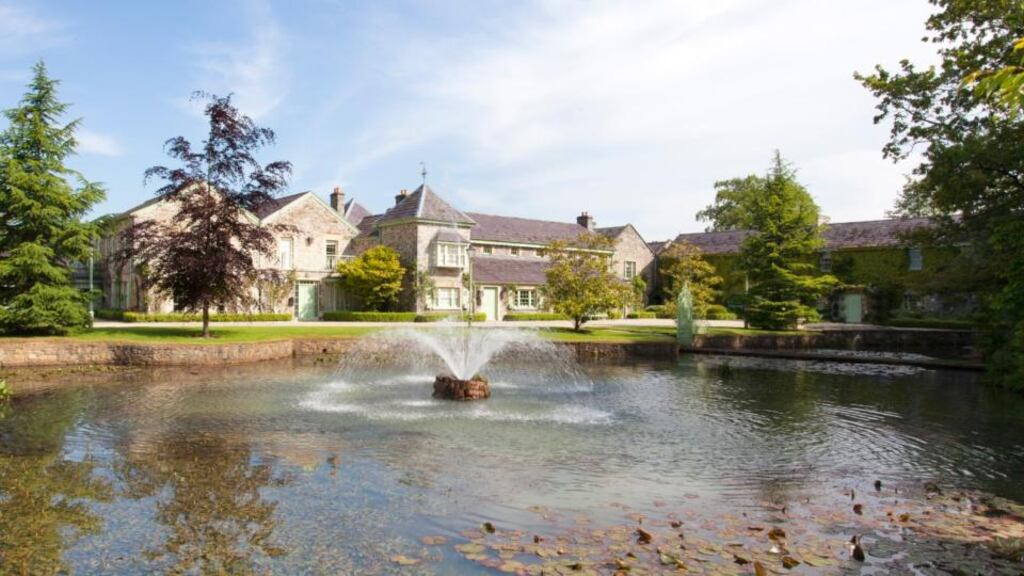A classical Georgian village reinvented by the Ryanair founder, the late Tony Ryan, alongside his Lyons estate near Newcastle, Co Kildare, is expected to attract Irish and overseas interest when it goes on the market today.
Marcus Magnier of Colliers International will be seeking in excess of €5 million for the Lyons Village which is fast becoming one of the top wedding venues in the country.
The facilities also include a separate restaurant, cafe, cookery school, shops, houses and apartments.
The original plan for the village envisaged a substantially larger residential element to help sustain the bar and restaurant elements .
The onset of the recession in 2008 forced a rethink of the expansion plans and the functionality of the commercial areas.
This has led to a change of emphasis with the commercial core now being successfully targeted at the buoyant out- of-town wedding reception market.
Last year Lyons attracted around 100 bookings and with 115 receptions already lined up for 2014, the expectation is that the figure could be close to 200 by year end.
The rapid growth of the wedding business is hardly surprising given the unique setting alongside the Grand Canal, the stunning facilities and the staff reputation for providing a high quality service.
With 16 acres in all available around the village, the expectation is that the next owners will expand the entertainment and residential facilities to cater for substantially more guests.
One drawback is that the capacity of the main reception room is limited to 180; there is an obvious need to either enlarge it or develop a more spacious dining facility elsewhere in the village.
The 600-acre Lyons Estate was acquired in 1996 by Tony Ryan who spent a fortune restoring and furnishing the main house.
After his death it went for sale at €60 million. More recently the asking price dropped to €30 million and last month the Ryan family opted to take it off the market.
Ryan showed the same flair and taste when he embarked on the redevelopment of the Lyons Village, then abandoned and in ruins, centred around a number of cut-stone buildings including an old flour mill destroyed by fire in 1904. Today the entrance to the village is marked by two impressive stone lions on top of high pillars leading to a mile long avenue through ancient woods and recently planted shrubbery.
The village itself is a mixture of two-storey cut-stone buildings, some dating from the 18th century and most of them redeveloped in recent years. Visitors will be aware that no expense has been spared in recreating the village which has four shops, offices, a cafe, separate cookery school, the main function room, the Lyons bar and, separately, the stunning La Serre Restaurant and Oyster Bar.
Up to three years ago overnight accommodation was quite limited in the village. The highlight was Shackleton House, a two-bedroom mansion with four-poster beds and tasteful antiques, and a one-bedroom apartment overlooking the courtyard. Sleeping arrangements have since been expanded and there are now nine houses in the village as well as four apartments and 14 suites concealed in a newly developed coach house.
Tony Ryan assembled a large team of mainly overseas tradesmen to refurbish the Lyons Demesne and redevelop the village.The result is an architectural landmark.
The houses are distinguished by a range of classical fittings, everything down to sophisticated rococo plasterwork and huge marble fireplaces, features which add dignity and elegance to the interiors. The village is a gem.













